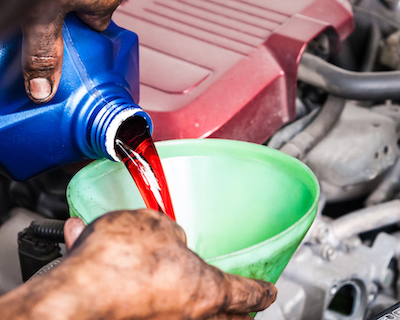Does Changing Your Transmission Fluid Really Cause Damage?
There's a lot of urban legend around changing the transmission fluid in your vehicle. The biggest legend is if the fluid hasn't been changed in a long time, it shouldn't be because it's old.
That's not really true, but here's what IS true. If the valve body gets all gunked up with transmission fluid that's damaged, the driver could lose the ability to shift between gears.
And that's why so many people believe that changing old transmission fluid can cause it to slip. Want to avoid that whole dilemma altogether? Simply change your transmission fluid regularly and you won't have to worry about it!
So, When Should You Change Your Transmission Fluid?
Every vehicle has its own requirements. That's why following the recommendation in your owner's manual is a must. It will tell you how often the transmission fluid should be changed, and what kind to use.
To check it, for most cars, the transmission dipstick is located behind the oil dipstick. You'll see markings on it that indicate whether the fluid is adequate, or that more needs to be added.
How Do You Know When the Transmission Fluid Needs to Be Changed?
Wipe the dipstick with a clean rag or paper towel. Then look at the color of the transmission fluid.
• If it's bright pink-the fluid is new. No need to change it.
• If it's light brown with a hint of pink-It needs to be replaced.
• If it hasn't been changed in a long time-it will be very dark brown. And, it may have metal particles floating about. This indicates transmission damage.
If your vehicle has lifetime transmission fluid, still check it around 100,000 miles. You want to make sure the vent tubes that allow pressure in your transmission to equalize isn't allowing in dust and moisture, too.
Should You Flush or Simply Change the Transmission Fluid?
Again, let your owner's manual be your guide! It will tell you which is recommended for your car, truck, or SUV.
For changing the fluid-Open the transmission drain (it's on the underside of the car). About 50% of the fluid will drain into the pan. The other half stays in the torque converter as well as other parts of the transmission.
Flushing your transmission-This method allows you to completely change all of the fluid. Attach a transmission hose to the input of the line running through the transmission. Attach another to the output.
By pumping new transmission fluid into the transmission pushes out the old fluid. We caution that this method is only recommended if the current transmission fluid is in relatively good condition, showing no signs of damage.
Want to Avoid the Possibility of Transmission Damage?
As we stated at the beginning of this article, simply change the fluid frequently or as your owner's manual recommends. This will ensure a healthy transmission for the life of your vehicle.
Remember, dirty fluid is not an effective lubricant, so it won't disperse well. Once the clutch packs lose their grip, old fluid may be all that's creating the friction needed to keep your transmission from slipping.
If you want some help keeping your vehicle healthy, consider the Joe Bowman GM certified service experts. Our technicians are highly trained and work on all types of vehicles. Schedule an appointment today!


